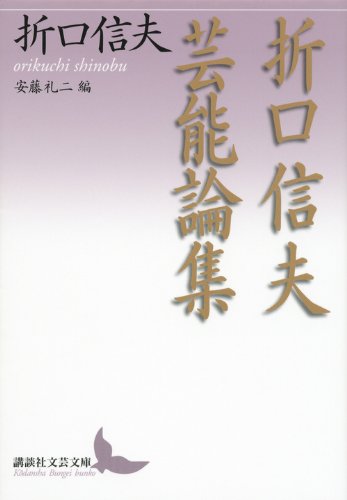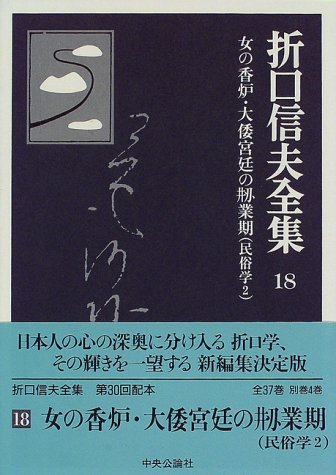1 0 0 0 OA 隠岐本新古今和歌集
- 著者
- 三矢重松, 折口信夫, 武田祐吉 校
- 出版者
- 岡書院
- 巻号頁・発行日
- 1927
1 0 0 0 OA 隠岐本新古今和歌集
- 著者
- 三矢重松, 折口信夫, 武田祐吉 校
- 出版者
- 岡書院
- 巻号頁・発行日
- 1927
1 0 0 0 OA 日琉語族論
- 著者
- 折口 信夫
- 出版者
- 日本文化人類学会
- 雑誌
- 民族學研究 (ISSN:24240508)
- 巻号頁・発行日
- vol.15, no.2, pp.194-206, 1950-11-15 (Released:2018-03-27)
Among the world languages, that which is most akin to Japanese is Ryukyuan, both of which may be classified together as the Ryukyu-Japanese language group. The author seeks for the original common form of this group by comparing the order of word components found in archaic Japanese and Ryukyuan. The problem of the order of word-components suggests also a possibility of special relationships between South China, the South Sea Islands, Formosa, Ryukyu and Japan. The present paper will serve as a preliminary contribution to such a problem. Among Japanese words which have become classic or obsolete since the mediaeval age, there are many which have a reverse order of components as compared with ordinary modern Japanese, such as kataoka, shita kutsu, hashi-date, mo-gari, which means respectively "land beside (kata) a hill (oka), " "a piece of cloth attached under (shita) a bamboo blind (sudare), " "socks worn under (shita) shoes (kuisu), " "an upright (date<tate) ladder (hashi), " "a provisional (gari<kari) funeral hall (mo)." Among the place and personal names, we find evidence that a female was called "Hime so and so" and a male "Hiko so and so" instead of "so and fo Hime" and "so and so Hiko." From the Ryukyuan vocabulary, examples are given mainly concerning personal names, which were intimately connected with the religious life of the islands, and its focus on the female shaman. On the grounds of various religious phenomena as well as relation between posthumous and infantile names of kings and nobles, the author demonstrates that there are many words meaning "one beloved by gods" and that these, too, were originally used in the order reverse to that of present usage. His study on such honorific suffixes as kimi and anji, and such eulogistic words as kikoe and shirare, gives additional examples of reverse word-order. Analysis of words like nozaki (first-fruits), katami (keepsake) etc. shows the archaic customary and ideological background of such words, and possibilities for reconstruction of early Japanese culture are indicated. The author asserts that the two peoples whose languages constitute the Ryukyu-Japanese group have lived in an intimate ethnic relationship for a long time.
1 0 0 0 女の香炉・大倭宮廷の剏業期
- 著者
- 折口信夫 [著] 折口信夫全集刊行会編纂
- 出版者
- 中央公論社
- 巻号頁・発行日
- 1997
1 0 0 0 真間・蘆屋の昔がたり
- 著者
- 折口 信夫
- 出版者
- 国学院大学出版部
- 雑誌
- 国学院雑誌 (ISSN:02882051)
- 巻号頁・発行日
- vol.53, no.1, pp.4-18, 1952-04

